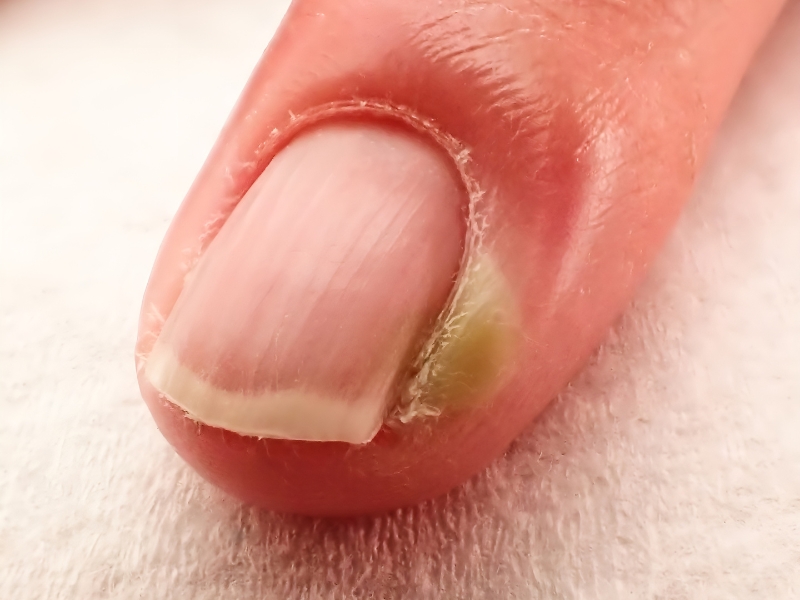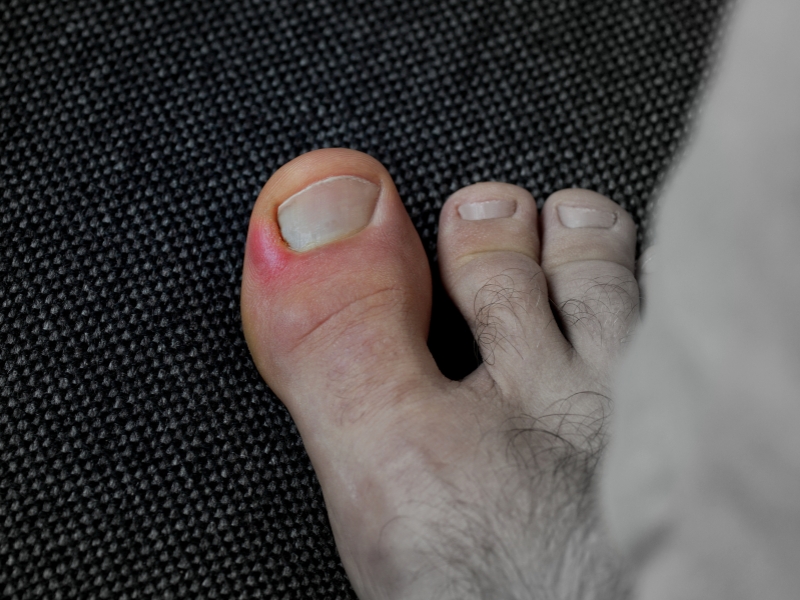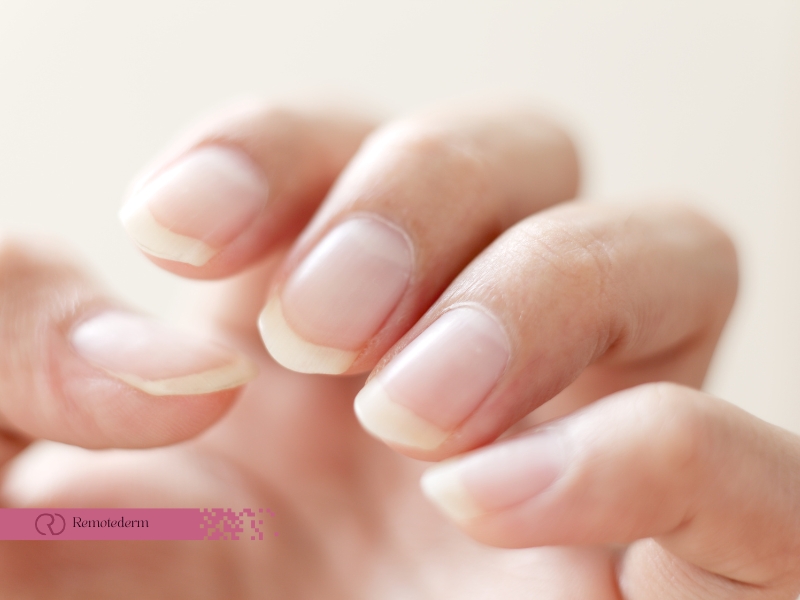This comprehensive guide covers everything Canadians need to know about paronychia, a common nail infection. From its causes and symptoms to effective treatments and self-care tips, you’ll find expert advice to manage this condition confidently. Whether addressing paronychia at home or consulting a healthcare professional in Canada, this guide equips you with the knowledge to make informed decisions about your nail health.
What is Paronychia?
Paronychia is a condition that infects the skin surrounding the nails, often caused by minor injuries to the nail matrix such as damage to the cuticle, hangnails, or habits like nail-biting. This infection can impact one or multiple nails and is typically triggered when the nail matrix is compromised, providing an entry point for bacteria or fungi. Paronychia can manifest acutely, appearing suddenly and persisting for a few days, or it can be chronic, enduring for several weeks or more.

Symptoms of Paronychia
If you are experiencing Paronychia, you may observe a range of symptoms manifesting around the affected area, including:
- Redness and swelling around your nail: This is often the first sign of an infection. The skin around the nail may become red and swollen, and you might feel warmth in the area.
- Pain and tenderness: The area around the nail may be sensitive to touch. You might feel a throbbing pain, especially when pressure is applied to the area.
- Pus-filled blisters: These may form around the nail. In some cases, the pus may need to be drained by a healthcare professional.
If you notice any of these symptoms, it’s important to seek medical attention to prevent the infection from spreading.
Causes of Paronychia
Paronychia can arise due to a multitude of factors, encompassing various triggers that include:
- Frequent immersion of hands in water: Regularly soaking your hands in water can soften the nail folds and make them more susceptible to infection. This is particularly common among dishwashers and swimmers.
- Nail biting or picking: These habits can cause minor injuries to the skin around the nails, allowing bacteria or fungi to enter. Nail biters and pickers are therefore at a higher risk of developing Paronychia.
- Improper manicures or pedicures: If not done properly, these can damage the skin around the nails, leading to infection. It’s important to ensure that any tools used are sterilized and that the person performing the manicure or pedicure is trained to do so properly.
Paronychia Treatment
Diving into Paronychia treatment, we’ll explore several critical factors to address this condition effectively:
- Severity-Based Treatment: The treatment for Paronychia is determined by its severity. Mild cases often improve with self-care, while severe or recurrent infections may require medical intervention.
- Self-Care Measures: These include warm soaks, avoiding water exposure, and applying over-the-counter antibiotic ointment.
- Medical Intervention: If self-care doesn’t resolve the issue or the infection is severe, a healthcare professional in Canada may need to drain a pus-filled blister for effective treatment.
- Antibiotics: Antibiotics, either topical or oral, are commonly prescribed. The choice of antibiotic is determined by the type of bacteria causing the infection.
- Antifungal Medication: In some cases where the infection is caused by a fungus, an antifungal medication may be needed.
- Prompt Treatment: It’s crucial to start treatment promptly to prevent the infection from spreading or becoming chronic.

What are some Paronychia self-care methods?
Here are a selection of self-care practices that you can implement if you’re dealing with Paronychia:
- Warm Soaks: Soak the affected nail in warm water for 15-20 minutes at a time, several times a day. This can help reduce swelling and relieve discomfort.
- Avoid Water Exposure: Try to keep the infected area dry as much as possible. When washing dishes or cleaning, consider wearing rubber gloves to protect your nails.
- Over-the-Counter Treatments: Apply an over-the-counter antibiotic ointment to the infected area. This can help fight the infection.
- Avoid Aggravating Activities: Refrain from activities that may further irritate or damage the area, such as nail biting or picking.
- Proper Nail Care: Keep your nails trimmed and clean to prevent bacteria or fungi from entering the skin around the nails.
Remember, if your symptoms persist or worsen, you should seek medical treatment. A healthcare practitioner can recommend appropriate treatment based on the severity of your disease.
Best Antibiotics for Paronychia
If self-care measures don’t help, your doctor might prescribe antibiotics. The best antibiotic for Paronychia is usually determined by the type of bacteria causing the infection. Some commonly prescribed antibiotics include cephalexin, dicloxacillin, and clindamycin. In some cases, an antifungal medication may be needed if the infection is caused by a fungus.

Online Nail Dermatologist
Leveraging the expertise of an online nail dermatologist can be a game-changer when dealing with Paronychia. These professionals can not only diagnose this common nail infection but also provide personalized treatment advice tailored to your specific needs. Furthermore, they can guide you in understanding your nail diseases chart, a valuable tool that can help you identify and comprehend common nail conditions, including Paronychia. This knowledge can empower you to take proactive steps in preventing future infections, contributing to overall nail health.
Final Thoughts
Understanding paronychia—its causes, symptoms, and treatments—is crucial for effective management. From self-care measures like warm soaks and proper nail care to seeking medical intervention in severe cases, Canadians have several options to address this common nail condition. Consulting an online nail specialist for guidance can also be helpful. Prompt treatment prevents complications and promotes healing. If symptoms persist or worsen, seeking medical attention is essential. With proper care, most cases of paronychia can be resolved, supporting healthier nails and overall well-being.
FAQs
Can Paronychia spread to other nails?
Yes, if left untreated, Paronychia can spread to other nails. This is why it’s important to start treatment as soon as symptoms appear.
Is paronychia caused by fungi or bacteria?
Paronychia can be caused by either bacteria or fungi. A healthcare practitioner can discover the specific cause.
Can I treat paronychia at home?
Mild Paronychia can generally be managed at home, but severe instances require medical attention. Always seek medical attention if symptoms persist or worsen.
How long does it take for paronychia to heal?
With treatment, most instances of Paronychia resolve within a week. However, the actual healing time varies according to the severity of the infection and the individual’s overall health.
